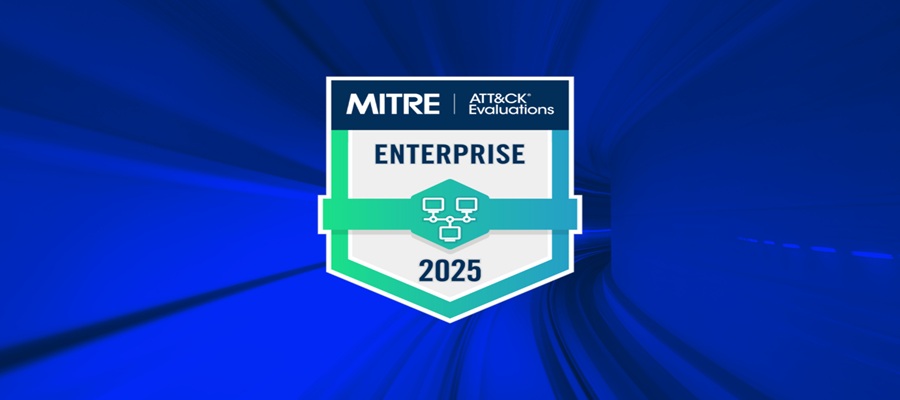Telecom
Cybersecurity: Sophos launches “Xstream” version of XG Firewall

Sophos , a global leader in next-generation cybersecurity, has introduced a new “Xstream” architecture for Sophos XG Firewall with high performance Transport Layer Security (TLS) traffic decryption capabilities that eliminate significant security risk associated with encrypted network traffic, which is often overlooked by security teams due to performance and complexity concerns.
XG Firewall now also features AI-enhanced threat analysis from SophosLabs and accelerated application performance.
Sophos also published the SophosLabs Uncut article, “Nearly a Quarter of Malware now Communicates Using TLS,” which explains how 23% of malware families use encrypted communication for Command and Control (C2) or installation.
The article details, for example, three common and ever-present Trojans – Trickbot, IcedID and Dridex – that leverage TLS during the course of their attacks.
Cybercriminals also use TLS to hide their exploits, payloads and stolen content and to avoid detection. In fact, 44% of prevalent information stealers use encryption to sneak hijacked data, including bank and financial account passwords and other sensitive credentials, out from under organizations.
Dan Schiappa, chief product officer at Sophos, said “As SophosLabs’ research demonstrates, cybercriminals are boldly embracing encryption in an attempt to bypass security products.
“Unfortunately, most firewalls lack scalable TLS crypto capabilities and are unable to inspect encrypted traffic without causing applications to break or degrade network performance.
“With the new Xstream architecture in XG Firewall, Sophos is providing critical visibility into an enormous blind spot while eliminating frustrating latency and compatibility issues with full support for the latest TLS 1.3 standard.
“Sophos’ internal benchmark tests have clocked a two-fold performance boost in the new XG TLS inspection engine as compared to previous XG versions. This is a game changer.”
Latency too often deters IT admins from using decryption, as seen in an independent Sophos survey of 3,100 IT managers in 12 countries. The survey white paper, The Achilles Heel of Next-Gen Firewalls, reports that while 82% of respondents agreed TLS inspection is necessary, only 3.5% of organizations are decrypting their traffic to properly inspect it.
Sophos listed Key new features of XG Firewall to include:
• Inspection of TLS 1.3 to detect cloaked malware: New port-agnostic TLS engine doubles crypto operation performance over previous XG versions
• Optimized critical application performance: New FastPath policy controls accelerate performance of SD-WAN applications and traffic, including Voice over IP, SaaS and others, to up to wire speed
• Adaptive traffic scanning: The newly enhanced Deep Packet Inspection (DPI) engine dynamically risk-assesses traffic streams and matches them to the appropriate threat scanning level, enhancing throughput by up to 33% across most network environments
• Threat analysis with SophosLabs intelligence: Provides network administrators with the SophosLabs AI-enhanced threat analysis needed to understand and adjust defenses to protect against a constantly changing threat landscape
• Comprehensive cloud management and reporting in Sophos Central: Centralized management and reporting capabilities in Sophos Central provide customers with group firewall management and flexible cloud reporting across an entire estate without additional charge
• Integration with Sophos Managed Threat Response (MTR) service: Customers of XG Firewall who also subscribe to the Sophos MTR Advanced service will have deeper actionable intelligence to prevent, detect and respond to threats, as a result of the integration
“Sophos’ new XG Firewall offers a wide array of enterprise-caliber features, with a growing installed base that is now one of the industry’s most widely deployed next-generation firewalls,” Eric Parizo, senior analyst for enterprise IT strategy, (according to Omdia, Enterprise Decision Maker, January 2020. Results are not an endorsement of Sophos or SophosLabs. Any reliance on these results is at the third-party’s own risk).
“XG Firewall can win against industry competitors in large part because of Sophos Central, its SaaS-based, single-pane-of-glass management system for overseeing deployment, management, policy, updates, and response, with optional log management and analytics. This cloud management platform with the Firewall Management and Reporting feature, plus the TLS inspection, position Sophos XG Firewall as a compelling option for a wide variety of organizations.
Bruce Kneece, CTO of Columbia, S.C.-based Convergent Information Security Solutions said, “At Convergent Information Security Solutions, we are engaged in the management and monitoring of both perimeter and internal cybersecurity for our customers, and until now we were somewhat limited in our ability to monitor SSL/TLS encrypted data streams.
“Sophos XG Firewall helps us solve this problem efficiently and affordably with the new accelerated DPI engine in the latest version.
“This, combined with new automatically-managed custom IPS rule sets, gives us much more visibility into encrypted traffic going through the network than we ever had before.
“This feature will immensely improve our customers’ security and we consider this to be critical, based how broadly cybercriminals are capitalizing on TLS encryption to cover-up and carry out their attacks.
“We’re also aware of how fast cyberattacks are morphing. With the ability to scan for potentially dangerous files transported inside of SSL/TLS tunnels, in addition to the zero-day detection engine of Sandstorm, we can provide better, faster customer protection, detection and service.”
Sophos XG Firewall is available in the cloud-based Sophos Central platform alongside Sophos’ entire portfolio of next-generation cybersecurity solutions.
Sophos’ unique Synchronized Security approach empowers these solutions to work together for real-time information sharing and threat response.
Telecom
Minister Claims Bandits Exploit Poor Network, Bounce Calls Off Multiple Towers

Bosun Tijani, minister of Communications, Innovation and Digital Economy, yesterday claimed that bandits and terrorists are able to communicate and coordinate their activities with ease because they exploit gaps in the country’s telecommunications network.

Bosun Tijani, minister of Communications, Innovation and Digital Economy,
Tijani, who spoke Politics Today, a Channels Television’s programme, on Friday, Tijani said the criminals exploit gaps in the country’s telecommunications network.
He also claimed the bandits use advanced technology to bounce calls across multiple towers in areas with poor connectivity.
“They weren’t using the normal towers; they bounced calls off multiple towers, which is why they favor areas that are largely unconnected,” he said.
When asked about reports that unregistered or fraudulently registered SIM cards are still in use despite the Bank Verification Number (BVN) and the National Identification Number (NIN)–Subscriber Identity Module linkage policies, Tijani said the issue is technically complex and the reports are not fully verified.
“Whether it’s fact or not, I do not know where you’re getting that from, and I do not know who has evidence that there are people with unregistered SIMs,” he added.
The minister stated that the federal government is investing in telecom towers in underserved regions, upgrading the country’s communication satellites to improve coverage, and expanding fiber-optic networks to strengthen the country’s digital infrastructure.
“If our towers are not working, our satellites will work. Nigeria is the only country in West Africa with communication satellites, and we are bringing new satellites to upgrade their capabilities,” Tijani said.
He added that these initiatives aim to ensure better connectivity for Nigerians while closing loopholes that criminals exploit, thereby enhancing national security.
The minister’s comments come amid rising concerns over insecurity in several parts of the North, where banditry, kidnapping, and terrorism have escalated in recent years.
There are also reports of bandits flaunting ransom payments on social media platforms such as TikTok, raising alarm among authorities and the public
Telecom
Sophos XDR Achieves its Best-Ever Results in the MITRE ATT&CK Enterprise 2025 Evaluation

Sophos, a global leader of innovative security solutions for defeating cyberattacks, has announced its best-ever results in the MITRE ATT&CK Enterprise 2025 Evaluation.

MITRE ATT&CK Enterprise 2025 Evaluation
Sophos XDR detected 100% of adversary behaviors (sub-steps)1 across two complex attack scenarios: Scattered Spider, which Sophos X-Ops tracks as GOLD HARVEST, a financially motivated cybercriminal collective, and Mustang Panda, which Sophos X-Ops tracks as BRONZE PRESIDENT, a People’s Republic of China (PRC) espionage group.
The Scattered Spider scenario included activity across Windows, Linux, and AWS cloud environments, and the Mustang Panda scenario focused on Windows only.
Further, Sophos achieved the highest-possible “Technique”-level rating for 86 out of 90 total sub-steps in the evaluation, by generating high-fidelity detections with details on execution, impact, and adversary behavior, providing clear who, what, when, where, how, and why insights.
Sophos XDR achieved:
- 100% detection coverage1 for all 90 adversary sub-steps across two complex attack scenarios across Windows, Linux, and AWS cloud environments
- Highest possible (“Technique”) ratings for 86 of 90 sub-steps, demonstrating deep visibility and actionable detections
- Highest possible (“Technique”) ratings for 61 out of 62 of sub-steps in the Scattered Spider scenario involving identity abuse, cloud exploitation, and data exfiltration
“Scattered Spider and Mustang Panda represent distinct threat profiles that challenge defenders in very different ways,” said Simon Reed, chief research and scientific officer, Sophos. “Achieving full detection coverage against both validates the accuracy and depth of Sophos’ analytics and demonstrates how the company’s AI-native XDR platform converts complex telemetry into clear, actionable intelligence, helping security teams detect, understand, and stop advanced attacks with confidence.
“Sophos’ consistently strong performance in these rigorous evaluations underscores the power and precision of our threat detection and response capabilities, and our commitment to stopping the world’s most sophisticated cyberthreats.
“Over the five years that Sophos has participated in ATT&CK Evaluations, we have continually invested in strengthening our platform, and that investment has translated into stronger results year after year – both in the evaluations, and in the security outcomes we deliver for our customers.”
These results demonstrate the power of the Sophos XDR platform to defend against sophisticated cyber threats. Every day, Sophos processes 223+ terabytes of telemetry in Sophos Central, generating 34+ million detections and automatically blocking 11+ million threats.
This scale of customer insights ensures that Sophos’ detections are being tested and improved to provide continuous protection while delivering stronger outcomes for organizations worldwide.
Understanding The Threat Actors
Sophos X-Ops has tracked GOLD HARVEST (Scattered Spider) since 2022, observing a loosely affiliated cybercriminal collective driven by both financial motives and a desire to elevate their reputations on underground forums.
Despite several arrests, operators and associates continue to launch high-profile attacks across the U.K. and U.S., at times partnering with major Russian-speaking ransomware groups.
Their sophisticated social engineering capabilities enable them to compromise even well-defended organizations, underscoring the importance of strong behavioral detections within modern security operations.
In parallel, Sophos X-Ops has monitored BRONZE PRESIDENT (Mustang Panda) for many years.
This long-running PRC espionage group conducts intelligence-led operations that align closely with priorities of China’s Ministry of State Security. Recent targeting includes activity against Tibetan communities surrounding the Dalai Lama’s 90th birthday, as well as intrusions on Thai government and military offices during periods of heightened regional tension.
BRONZE PRESIDENT remains one of the most active and persistent state-aligned threat actors operating today.
MITRE ATT&CK Evaluations are among the world’s most rigorous independent security tests.
They emulate the tactics, techniques, and procedures (TTPs) used by real-world adversaries to assess each participating vendor’s ability to detect, analyze, and articulate threats in alignment with the MITRE ATT&CK Framework.
These evaluations continually strengthen Sophos’ capabilities for the benefit of the organizations it protects. This was the seventh round of MITRE’s “Enterprise” ATT&CK Evaluation, a product-focused assessment designed to help organizations better understand how security operations solutions like Sophos EDR and Sophos XDR can help them defend against sophisticated, multi-stage attacks.
When evaluating EDR or XDR solutions, Sophos recommends reviewing MITRE ATT&CK Evaluations alongside other independent proof points.
Telecom
CBN, NCC to Launch Short Code for Swift Consumer Complaint Resolution

Central Bank of Nigeria (CBN) on Thursday announced plans to partner with the Nigerian Communications Commission (NCC) to develop an industry-wide short code for consumers to lodge complaints with financial institutions anytime, anywhere, even without internet access.

CBN
Dr Aisha Isa-Olatinwo, CBN Director, Consumer Protection and Financial Inclusion Department, disclosed this at a virtual Consumer Protection Town Hall meeting titled “Ask the Regulator”, organised by Enhancing Financial Inclusion and Advancement (EFInA).
She said the initiative addresses challenges faced by vulnerable consumers using feature phones who often have to visit bank branches physically to report issues amid the convergence of telecom and banking services.
Isa-Olatinwo said the CBN had achieved 94 per cent month-on-month timely resolution of consumer complaints, adding that the apex bank had streamlined processes and partnered with banks to balance consumer protection with financial system stability.
An EFInA poll presented at the event revealed that 61 per cent of respondents experienced failed transactions in the past 12 months, while 26 per cent had reversals within 24 hours and 54 per cent between 24 and 48 hours.
Other complaints included six per cent for fraud, 14 per cent for hidden charges and 15 per cent for poor customer service, with 66 per cent of respondents aware of complaint escalation steps.
President of Consumer Advocacy Foundation of Nigeria (CAFON), Mrs Sola Salako-Ajulo, lamented that consumers often feel unprotected and urged introduction of fraud insurance for instant reversals, shifting the burden of proof from customers.
She said: “What is missing in our system—unlike more developed economies—is fraud insurance, where banks reverse reported fraud immediately, refund consumers, and investigate later.”
Mr Ajibade Laolu-Adewale, Chairman of Committee of e-Business Industry Heads (CeBIH), represented by Mr Adeyemi Salisu, stressed that banks must resolve disputes between acquiring and issuing banks without redirecting customers to merchants.
The short code initiative is expected to enhance financial inclusion by providing accessible redress mechanisms in Nigeria’s evolving digital payment ecosystem.

 Telecom2 days ago
Telecom2 days agoMTN Nigeria Launches Unlimited 5G Broadband Plans to Boost Digital Inclusion

 News2 days ago
News2 days agoFRC, ICPC Seal Anti-corruption Alliance

 News2 days ago
News2 days agoDebt Rises in AI Data Centre Boom

 Telecom1 day ago
Telecom1 day agoMinister Claims Bandits Exploit Poor Network, Bounce Calls Off Multiple Towers

 Telecom2 days ago
Telecom2 days agoMoMo PSB Brings Relief to UNILAG Students with Ultra-Cheap Bus Fares

 E-Financial2 days ago
E-Financial2 days agoSterling Bank, Pan-Atlantic University Partner to Certify Non-Oil Export Academy Graduates

 Broadcasting2 days ago
Broadcasting2 days agoYoung Africans Hit Hardest by Online Gender Violence, Paradigm Initiative Reports

 General News2 days ago
General News2 days agoFidelity Bank to Host Virtual Masterclass on New Tax Law
























